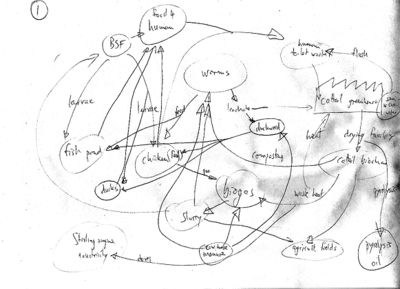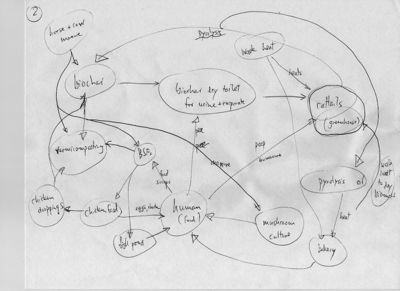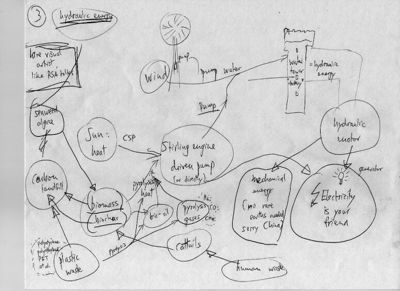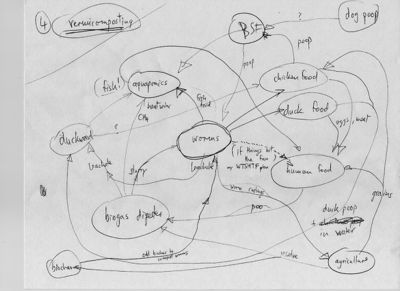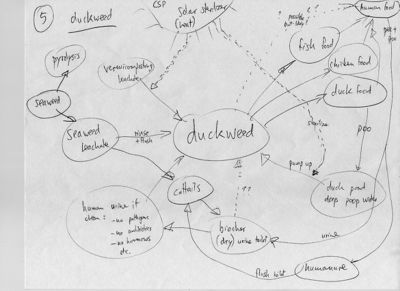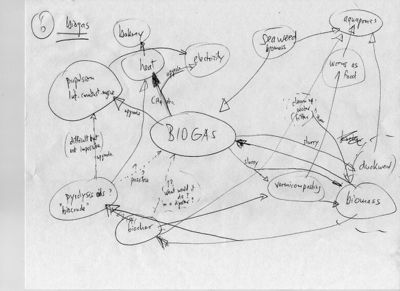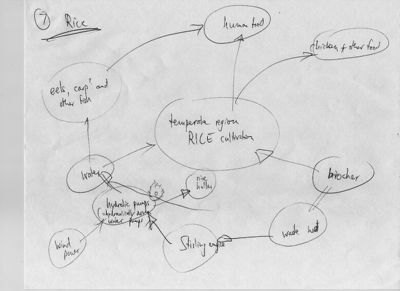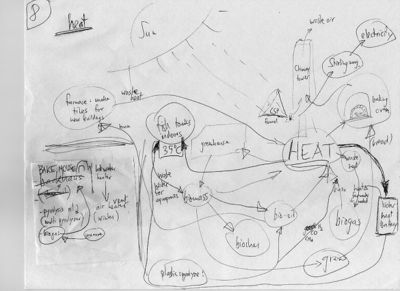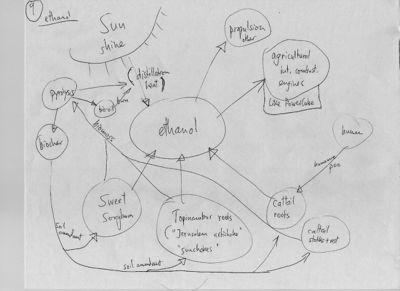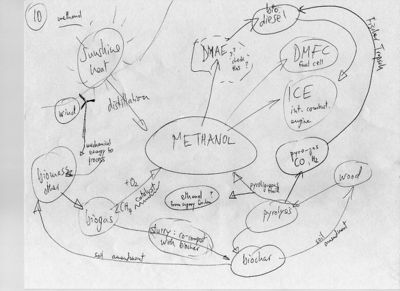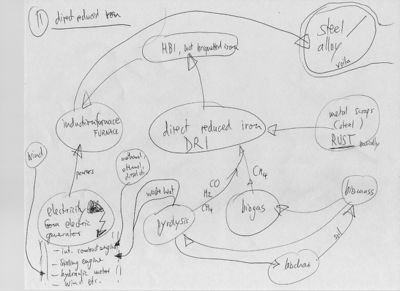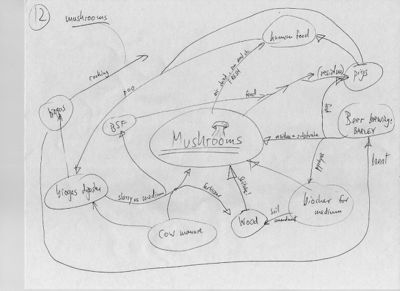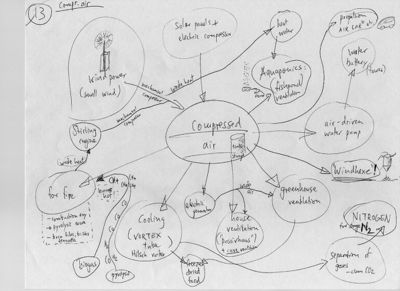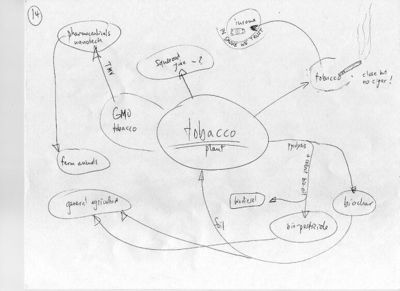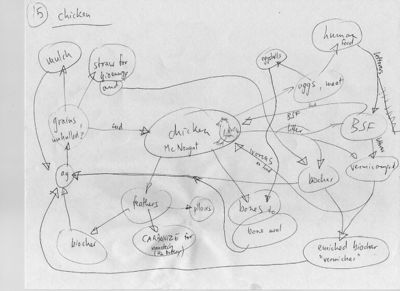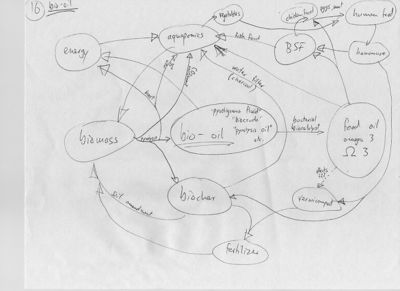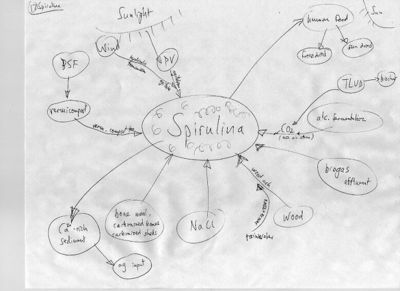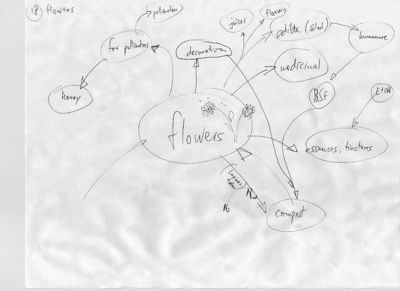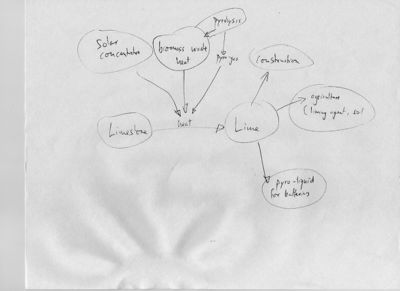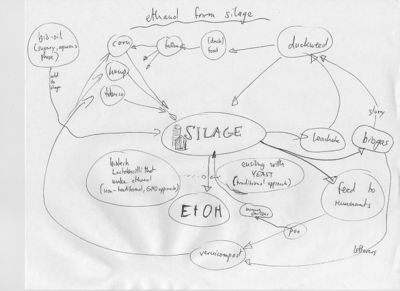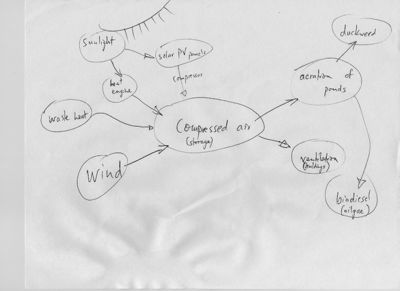IFWMS-Kiehl2009Archive
Jump to navigation
Jump to search
About the Collection
This archive is a collection of diagrams related to the concept of the Integrated Food and Waste Management System (IFWMS). Some of them have nothing to do with food though, so perhaps a better term is Integrated Farming and Waste Management System. The diagrams were created in 2009-2010 by OSE contributor Rasmus Kiehl while he was putting together a variety of pages on the OSE Wiki. The collection has been archived here for further discussion and development.
- the material is all handwritten. If something is not legible, contact Rasmus for clarification
- if content needs to be clarified, contact Rasmus also ("What was he thinking?" literally)
- The way the diagrams are organized is that for each of them, one particular component is “in the spotlight” and others are peripheral. The interconnections of energy and resource flows are shown as arrows. This is obviously a simplification.
- For portability, the material has also been turned into a single .pdf file: http://opensourceecology.org/w/images/7/73/IFWMS-Kiehl2009Archive_-_all_diagrams.pdf
Purpose of archiving this material here
- available to the community rather than forgotten on Rasmus' personal hard drive
- for others to study and develop IFWMS science and product ecology
- use of these diagrams in handbooks or textbooks about the IFWMS
- Future development of this material: specific tasks have been outlined below
- Future extensions: various new components
Future disposition of this material: project
- graphic improvement: use cloud editable docs for a neat design, like google docs
- link these diagrams to the respective OSE wiki pages for further information about components, for example: biochar, lime, or duckweed
- discussion, improvement, enhance with additional components (again: “spotlight approach”)
- improve on interconnections: instead of just simple arrows or lines, there can be specific “qualities” associated with them, e.g. colors to indicate whether something is an energy flow, a resource flow (e.g. chemical or nutrient), a food flow, a financial flow, etc.
- this can serve as the basis to begin using modeling approaches (i.e. “in silico models”) of energy and resource flows. In other words, before an integrated farm is even set up, it could first be modeled in silico, and those models could later be tested in the real world when the farm is built, and feedback provided to the models. Various “in silico farm” iterations can be made until a realistic, workable final iteration is achieved. Then the farm can be implemented in the most efficient way possible, with minimal [losses] of time, financial resources and effort.
